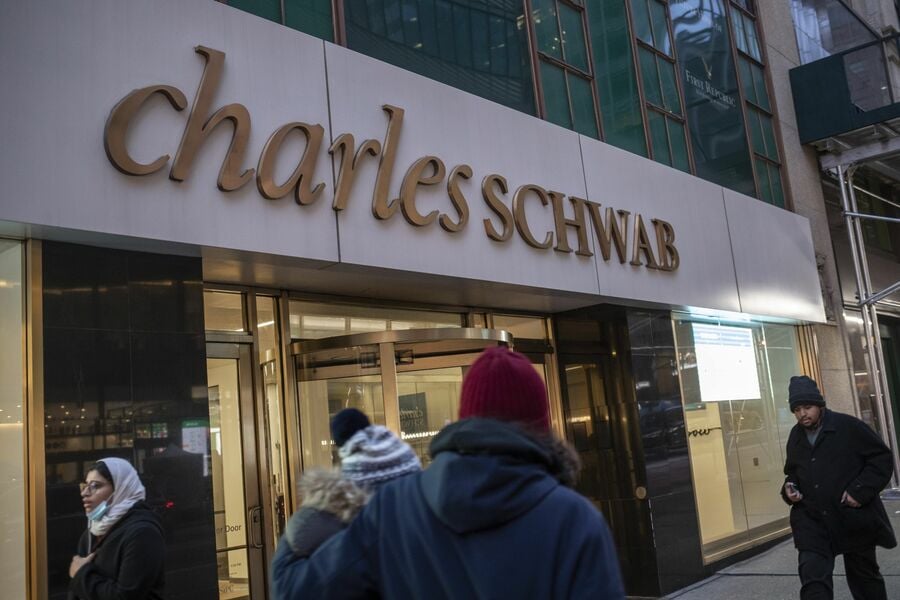

Charles Schwab Corp. started using derivatives to hedge interest rate-related risk during the first quarter.
The derivatives were valued at $3.9 billion as of March 31, Schwab said in a regulatory filing Monday.
Schwab, which runs both brokerage and bank businesses, has been ensnared in the tumult ravaging U.S. regional banks after the Federal Reserve embarked on its most aggressive interest rate tightening cycle in decades last year.
The Westlake, Texas-based company confronted swelling paper losses on securities it owns and grappled with dwindling deposits as customers moved cash into accounts that earn more interest. Schwab’s executives have said those withdrawals will abate. The pace of cash withdrawals is already starting to slow, Chief Financial Officer Peter Crawford said in a recent statement.
Shares of Schwab slid 0.2% to $47.55 in early trading at 8:35 a.m. in New York. The stock had plunged 43% this year through Monday.
To keep up with withdrawals, Schwab has been relying on higher-cost funding sources, including loans from the Federal Home Loan Bank system. Schwab had about $45.6 billion in outstanding FHLB loans and $6.8 billion in repurchase agreements at the end of March.
Last year, the company began issuing certificates of deposit — longer-term savings vehicles that lock up customer money for a fixed period. Schwab clients held $31 billion of CDs at the end of March, accounting for roughly 9% of Schwab’s total bank deposits. Since then, the firm issued an additional $6.8 billion of CDs through other brokers.
Schwab expects emergency funding measures to taper off, forecasting that its use of more expensive funding will peak this year and decrease in 2024, with only limited amounts remaining in 2025.

While industry statistics pointing to a succession crisis can cause alarm, advisor-owners should be free to consider a middle path between staying solo and catching the surging wave of M&A.

New joint research by T. Rowe Price, MIT, and Stanford University finds more diverse asset allocations among older participants.

With its asset pipeline bursting past $13 billion, Farther is looking to build more momentum with three new managing directors.

A Department of Labor proposal to scrap a regulatory provision under ERISA could create uncertainty for fiduciaries, the trade association argues.

"We continue to feel confident about our ability to capture 90%," LPL CEO Rich Steinmeier told analysts during the firm's 2nd quarter earnings call.
Orion's Tom Wilson on delivering coordinated, high-touch service in a world where returns alone no longer set you apart.
Barely a decade old, registered index-linked annuities have quickly surged in popularity, thanks to their unique blend of protection and growth potential—an appealing option for investors looking to chart a steadier course through today's choppy market waters, says Myles Lambert, Brighthouse Financial.
